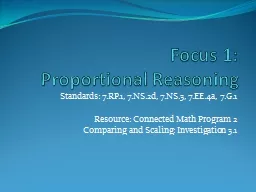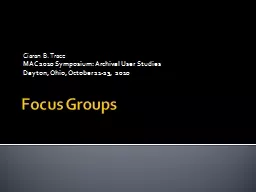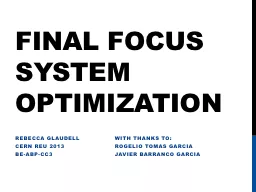PPT-Focus 1:
Author : yoshiko-marsland | Published Date : 2016-03-05
Proportional Reasoning Standards 7RP1 7NS2d 7NS3 7EE4a 7G1 Resource Connected Math Program 2 Comparing and Scaling Investigation 31 Comparing and Scaling Ratio Proportion
Presentation Embed Code
Download Presentation
Download Presentation The PPT/PDF document "Focus 1:" is the property of its rightful owner. Permission is granted to download and print the materials on this website for personal, non-commercial use only, and to display it on your personal computer provided you do not modify the materials and that you retain all copyright notices contained in the materials. By downloading content from our website, you accept the terms of this agreement.
Focus 1:: Transcript
Download Rules Of Document
"Focus 1:"The content belongs to its owner. You may download and print it for personal use, without modification, and keep all copyright notices. By downloading, you agree to these terms.
Related Documents














